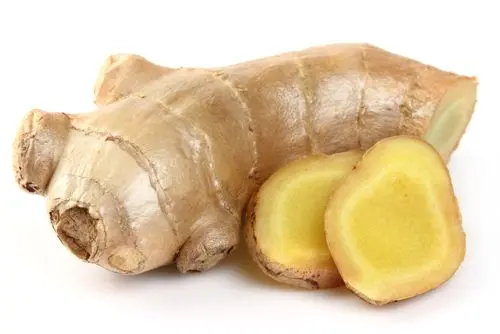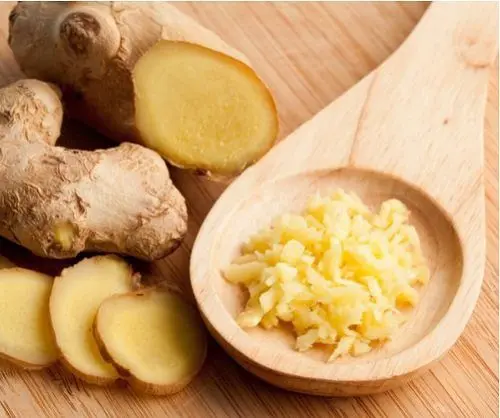Contents
🙂 Greetings to regular and new readers! In the article “Ginger root: benefits and harms, facts, tips” – useful information about this plant. What are the benefits of ginger, contraindications, composition and calorie content. How to choose and store.
There are many adjectives in the name of ginger: pharmacy, medicinal, real, ordinary. In Russia, it is simply ginger, also called processed or fresh rhizomes of a plant.
Southeast Asia is considered the homeland of the miracle root. In these parts, 3000 years ago, people paid attention to the taste and healing qualities of the root.
In Europe, the ginger root appeared only in the Middle Ages. It was used as a spice and medicine. For example, King Henry VIII of England recommended ginger root for the prevention of plague.

Queen Elizabeth I of England also adored ginger. She introduced the gingerbread gingerbread into fashion, which is also very popular with modern children. This root was appreciated by the most famous and wisest healer of the Middle Ages – Avicenna.
Ginger: calories
In 100 grams
- kcal – 80;
- proteins – 1,8 g;
- fats – 0,8 g;
- carbohydrates – 17 g;
- Cellulose – 2 g;
- water – 79 g;
- vitamins: B1, B2, B4, B5, B6, B9, C, E, K, PP;
- potassium, calcium, magnesium, sodium, phosphorus;
- iron, manganese, copper, selenium, zinc.
The healing properties of ginger
Fresh ginger root is a storehouse of potassium – 17%, manganese – 12%, copper – 23%.
- Potassium establishes the acid-base balance of the blood, the water-salt balance. Activates carbohydrate and protein metabolism. Essential for protein synthesis, the conversion of glucose to glycogen, and for renal excretory function. Normalizes blood pressure and heart rate.
- Manganese has a beneficial effect on the formation of connective and bone tissue. Essential for the synthesis of cholesterol and nucleotides.
- Copper stimulates the absorption of proteins and carbohydrates. Takes part in the processes of providing the tissues of the human body with oxygen. Copper deficiency is manifested by disorders in the formation of the cardiovascular system and skeleton, the development of connective tissue dysplasia.
In addition, ginger root:
- has a bactericidal effect;
- promotes fat burning and is used for weight loss;
- prevention of thrombus formation (reduces blood viscosity);
- protects against colds and flu;
- has anti-inflammatory and antipyretic, diaphoretic action;
- to reduce the feeling of nausea, it is recommended to chew ginger root plates;
- helps with motion sickness;
- fights parasites (helminths);
- protects against diabetes mellitus;
- good for the body’s immune system;
- ginger tea will help you relax if you are physically tired;
- refreshes breath;
- improving the function of hematopoiesis.
“Nibble” ginger for health, but the best advice is to consult an experienced doctor. We are all different: what is good for one person will be harmful for another.

Ginger Contraindications
- idiosyncrasy;
- with heart disease: heart attack, stroke, ischemia;
- high blood pressure;
- with gallstone disease, it can provoke the movement of the stone;
- hemorrhoids;
- liver problems;
- in acute forms of stomach ulcers, gastritis;
- severe pregnancy;
- not recommended for children under 3 years old;
- the presence of stomatitis or wounds in the mouth;
- refrain from abuse of this product. A measure is needed in everything. Do not forget: any substance or product in small doses is a medicine, and in large doses it is poison!
How to choose ginger?
You need to choose a strong ginger root, without stains, damage and rot. The heavier the root, the juicier it is. If it is very light, then it is dry. To determine the freshness of the root, you can pick out the skin of the root. This makes it easier to determine whether it is dry or juicy.
By the way, ginger is a close relative of turmeric. They are from the same family – Ginger. They differ in taste and color of the root, in turmeric it is bright yellow.
How to store?
It is best to keep the coveted root in the refrigerator in the vegetable compartment. Pre-wrapping it in edible paper. The peeled rhizomes are placed in a glass jar and poured with white wine, kept in the refrigerator. Ginger root is pickled or dried. But there are fewer nutrients in a dry product.
In this video, more information “Ginger Root: Benefits and Harms”
Dear readers, now you have become better acquainted with this unique plant. Autumn will come, and winter will come after it. Each season has its own charm. Agree, it will be nice to sit comfortably in an armchair and drink a cup of aromatic ginger tea. 😉 Life is great!
Share the information “Ginger Root: Benefits and Harms” with other people on social media. networks. Until next time! Come back more often, do not hesitate!









